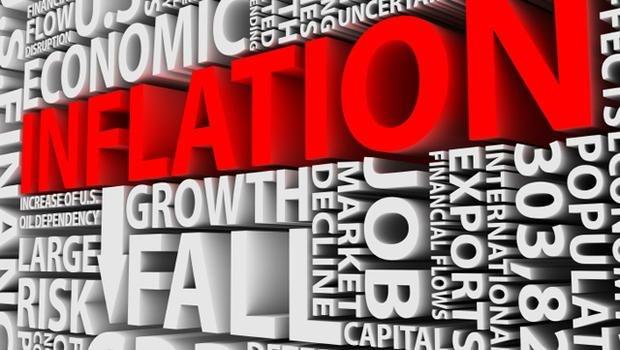By Dipesh Ghimire
Inflation edges up to 5.74 percent; urban cost of living rises faster

Nepal’s inflation increased modestly in mid-September (Bhadau 2082), with the National Consumer Price Index (NCPI) reaching 105.74 points, up from 104.96 in the previous month. According to the latest mid-month report released by the Nepal Rastra Bank (NRB), the figure represents a 0.74 percent rise on a monthly basis and a 1.87 percent increase compared to the same period last year.
Although the overall inflation remains moderate, analysts say the composition of inflation has shifted. Prices of essential food items have largely stabilized, but the cost of education, health, housing, and personal services continues to climb, particularly in urban areas. The report also highlights a growing divide between rural and urban inflation, showing that city dwellers are now facing a stronger rise in the cost of living.
Rural–urban inflation gap widens
The report shows that inflation in rural Nepal stood at 1.73 percent, while urban areas recorded 1.91 percent during the same period. Economists believe the difference is due to supply chain inefficiencies and rising transportation costs that disproportionately affect urban markets.
While rural consumers benefited from local agricultural output and relatively shorter supply chains, urban households faced higher costs on imported goods and services. This pattern has gradually widened the urban cost-of-living gap, even as overall inflation remains under control.
Food inflation stabilizes nationally, but urban consumers pay more
The Food and Beverages group, which accounts for nearly one-third of the consumer basket (35.49 percent), increased 1.43 percent month-on-month, though it fell 1.34 percent year-on-year. This indicates that food prices have largely stabilized following earlier seasonal volatility.
However, the rural–urban contrast within this category is striking.
In rural areas, food inflation rose by just 0.58 percent, while in urban areas it surged by 1.80 percent. Local harvests, community farming, and easier access to domestic produce helped rural consumers, whereas urban households struggled with higher transport and distribution costs.
Vegetables recorded one of the largest monthly jumps — rising 6.67 percent nationwide and 7.82 percent in urban markets — largely due to seasonal shortages and expensive logistics. Prices of meat and fish rose 3.37 percent, driven by increased feed costs and festive demand. Similarly, ghee and oil prices climbed 11.09 percent year-on-year, reflecting the global spike in edible oil imports.
Meanwhile, spices and pulses became cheaper, helping offset the overall food burden. Spices declined 6.31 percent, while pulses fell 3.58 percent compared to the previous year.
Economists say this mix of movements reflects a stabilizing food market, but one still vulnerable to external shocks and import costs.
Service sector drives new inflation pressure
The Non-Food and Services group, which carries a 64.51 percent weight, has become the main driver of inflation. The group index reached 106.21 points, rising 0.37 percent monthly and 3.70 percent annually. This shows that price pressure is now coming from structural sectors — those tied to wages, education, healthcare, and service delivery — rather than from volatile commodities.
The cost of education rose sharply, by 10.40 percent in rural areas and 7.29 percent in urban areas.
Rising school and tuition fees, particularly in private institutions, have pushed household education expenses higher nationwide.
Similarly, health services increased by 4.56 percent in rural regions and 2.27 percent in urban centers.
The rising cost of medical consultation, pharmaceuticals, and diagnostic services continues to add to the pressure on family budgets.
Restaurants and accommodation services also reported steady gains, with a 3.88 percent national increase, reflecting post-pandemic tourism recovery and higher input costs.
Education and household expenses climb steadily
Inflation in clothes and footwear reached 6.29 percent, driven by costlier textile imports and strong pre-festival demand.
Furnishing and household equipment rose 4.55 percent, indicating a gradual recovery in domestic consumption after two years of slow growth.
Economists say such inflation patterns show that Nepal’s economy is transitioning from consumption-based inflation (driven by food and fuel) to service-based inflation, which tends to be more persistent.
Once prices of education, healthcare, and personal services rise, they seldom fall quickly — making this a structural challenge for price stability in the coming years.
Stable housing, communication, and finance prices provide relief
Despite upward trends in most categories, several sectors remained stable.
The housing and utilities index recorded only a 1.02 percent annual increase, thanks to steady rent levels and unchanged electricity tariffs.
The communication group saw almost no change, while insurance and financial services dipped slightly by 0.22 percent, providing minor relief to urban consumers.
According to economists, the stability in these areas prevented the overall inflation figure from exceeding 6 percent.
However, they warn that any surge in global oil prices or transport costs could quickly erode this balance.
Rural inflation driven by services, urban inflation by consumption
The NRB report reveals distinct inflation patterns between Nepal’s rural and urban areas.
In rural regions, inflation was largely driven by rising costs of education, health, and furnishings, whereas in cities it was fueled by transport, rent, and consumer goods.
This marks a two-speed inflation trend: one structural, one consumption-based.
Experts suggest that policy responses must therefore differ by geography — improving service delivery and price regulation in rural areas, and reducing transport and import dependency in cities.
With the overall inflation rate at 5.74 percent, Nepal remains within the central bank’s target range.
Yet, the structure of inflation is shifting in a way that poses long-term risks to affordability.
While food and fuel inflation have softened, education, health, and personal service costs are rising steadily, placing a heavier burden on households.
Economists say this trend demands a strategic policy approach:
to improve productivity in domestic agriculture, regulate private-sector pricing in education and health, and manage logistics and fuel costs that directly impact urban prices.
If global conditions remain stable, inflation for the ongoing fiscal year 2082/83 is expected to hover between 5.5 and 6 percent, indicating stability — but also signaling the emergence of structural inflationary pressure within Nepal’s evolving economy.









